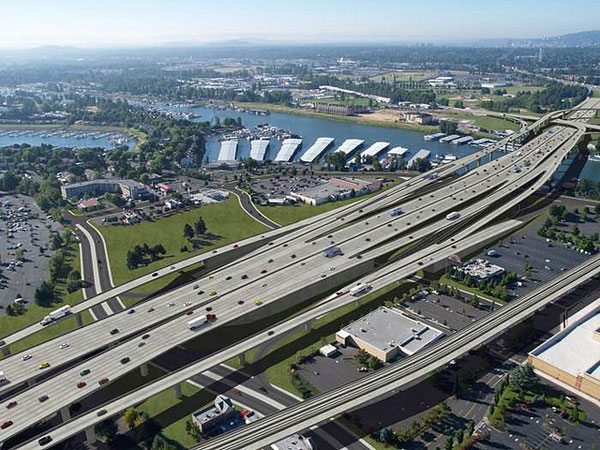
October 21, 2017; New York Times
Has the time come to radically revise how we think of cities? The fabric of urban and suburban life has been woven with thick strands of highways that connect and separate communities and neighborhoods. Some urban planners see this as the right moment to rip them out and rebuild cities with less of an eye toward their ability to move traffic and more emphasis on quality of life for their residents.
According to the Congress for the New Urbanism, these urban planners envision “the restoration of existing urban centers and towns within coherent metropolitan regions, the reconfiguration of sprawling suburbs into communities of real neighborhoods and diverse districts, the conservation of natural environments, and the preservation of our built legacy.”
Steven Kurtz, writing in the New York Times about the place of highways in this new urban landscape, says, “If it sounds counterintuitive, if not crazy, to tear down a highway that still carries thousands of cars and trucks each day, there are a number of case studies to point to.” Supporting the removal of freeways also has an economic rationale that is quite attractive with tight city, state, and national budgets:
Perhaps the greatest argument that removal advocates have is that so much of this infrastructure is nearing the end of its life span. In this era of tight budgets and political gridlock, it may be cheaper for local and state governments to remove a freeway rather than repair or build a new one.
Sign up for our free newsletters
Subscribe to NPQ's newsletters to have our top stories delivered directly to your inbox.
By signing up, you agree to our privacy policy and terms of use, and to receive messages from NPQ and our partners.
By removing lanes of concrete, city planners hope to encourage the development of new and improved mixed-use communities that will attract new residents and spur economic growth. As an example, proponents point to the removal in 2002 of a length of highway leading into central Milwaukee that was once thought critical. John Norquist, Milwaukee’s mayor at the time and the spearhead for this effort, told the Times, “The bill to demolish the Park East and restore the street grid was around $30 million, significantly less than the $80 to $100 million estimated cost to rebuild the 40-year-old freeway.” Norquist pointed to “the rising land values and the slow-but-steady development along the 26-acre corridor in the years since—and the lack of a traffic apocalypse—as signs of success.”
Angelo Trichilo, deputy chief engineer for the New York State Transportation Department, imagines “an urban boulevard that allows all modes of transportation—pedestrians, bicyclists, and cars—to use that facility” once offered by the multi-lane highways.
Making large, urban communities take on more of a small-town feel sounds appealing, but will it actually solve any of the difficult problems our cities face? In many cases, our highway systems provided mechanisms to allow white communities to wall off black and poor neighborhoods and to allow whites to flee cities for the suburbs. Removing these barriers might create a way to undo some of the harmful impacts of segregation against which urban schools and police departments still struggle.
However, there’s also the danger that these efforts will accelerate gentrification, bringing younger, whiter, and wealthier residents back into central cities at the expense of longtime older, poorer, and less mobile populations. Ensuring enough affordable housing is available in our urban centers would only be made more difficult by an uncontrolled process of renewal. And without highways to connect suburbs to cities, there is a real danger that “undesirables” will be further isolated and disconnected from economic and social opportunity.
Rick Cohen, writing for NPQ, saw the downside of uncontrolled gentrification in Chattanooga, Tennessee, as “the deepening of income and racial inequities in the midst of metropolitan progress.” For policymakers and urban planners, the challenge will be to balance the interests of all residents and not just follow the allure of the potential economic benefits from gentrification. Can they hear and value the voices of those with limited financial and political clout? The answer may be seen where the rubber currently meets the road.—Marty Levine











